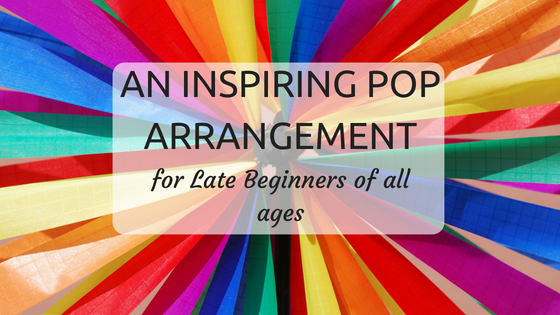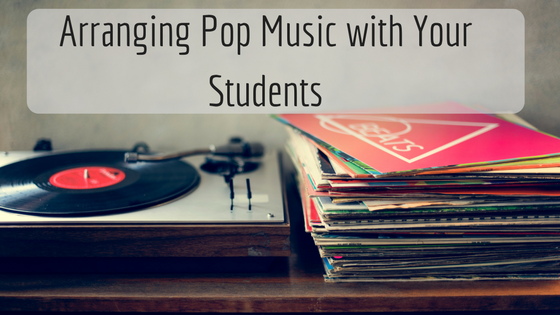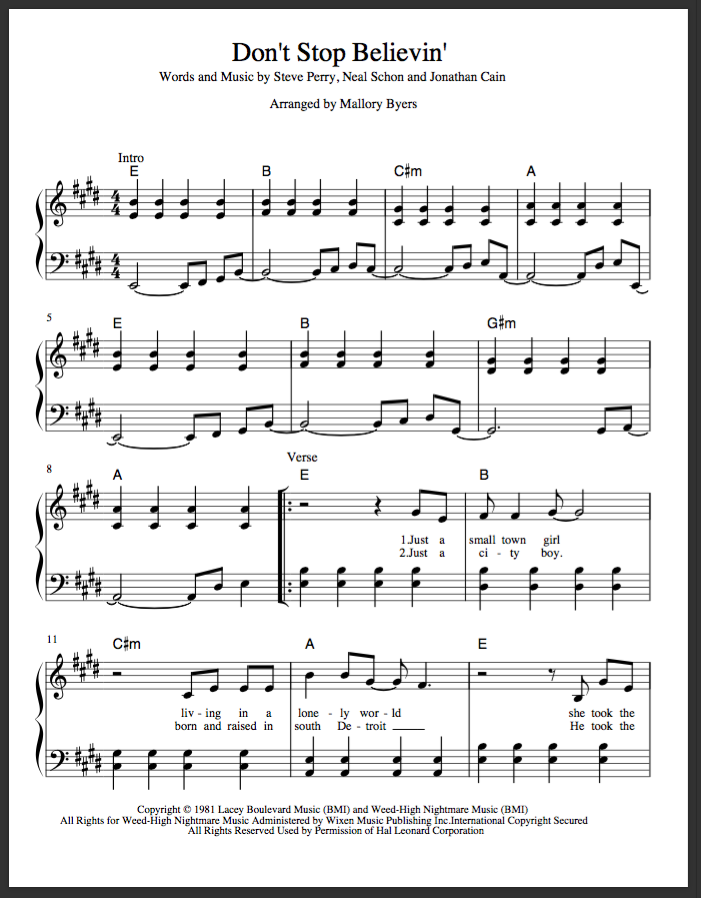|
I once heard Carol Matz say in an interview that she tries to avoid "ice cream songs." Ice cream songs are those pop songs that are popular for 5 minutes, but by the time you arrange them for piano students, they've lost their appeal. Today's featured arrangement is definitely not an ice cream song, and what's even better, it will appeal to students of all ages! If you teach adults, they'll remember Cyndi Lauper's original from the 80s. Your littles and elementary age kids will recognize it from Trolls. The message of this song is timeless, and it sounds beautiful on the piano. This arrangement is great for beginners who can reach a 7th, and even though it's pretty simple to learn, it sounds full and sophisticated. More intermediate students may have fun adding their own embellishments. You can see and purchase True Colors here. Let me know how you like it!
2 Comments
Piano teachers' views of popular music seem to run the gamut. Some think its garbage akin to slang and curse words when compared to real literature (aka classical music). Some don't mind it and will allow students to play a "fun piece" from a score occasionally, to keep them motivated. Others see value in it for teaching theory. Personally, I think pop music is valuable in a few different ways: 1. It is the music of our time. It's what students are listening to, and it's a way to meet them where they are. 2. It's extremely useful for ear training and theory. 3. It's an outlet for students to be creative. 4. It's useful and marketable. If students are well versed in improvising, arranging, playing from lead sheets, chord charts, and simply playing in a popular style, a wide world of job opportunities opens up to them that they wouldn't have with mere classical, score-reading, training. 5. It's fun! I'm happy to see a trend among music teachers to embrace pop music, but have we ever taken the time to think about what our goals are in teaching it? There are a lot of approaches we music teachers can take to teach popular music to our students. -finding a good arrangement and playing from a score -playing from a lead sheet and improvising different left hand chordal patterns -playing from a chord and either working out the melody by ear or singing along -figuing the whole thing out by ear from a track If we have goals in mind, it can help shape our approach. These are mine: 1. To introduce students to the characteristic aspects of pop music: syncopation, driving beats, strong melodies, interesting licks, those dreaded earworms! 2. To strengthen students' understand of keys, chords, and chord progressions. 3. To develop students' ears and abilities to play by ear. 4. To encourage creativity, and to give students to tools to create their own arrangements and original compositions. With this in mind, here's how I typically teach pop music: If a student asks for a specific song, I'll check to see if there's a good arrangement available at their level. If there is, we might learn the song from the score while discussing things like the form, chord progressions, rhythmic elements, technique involved, etc., much in the same way you might approach a classical piece. The benefit of this is exposure. The student gets to the chance to see what a solid piano arrangement of a pop song looks and sound like. It gives them vocabulary that they can use in their own arranging and composing. If there is no good arrangement, (or sometimes if there is, but I don't feel like using it), I'll look for a lead sheet. I probably teach 70-80% of pop music from lead sheets. They allow students to see what the melody looks like and how it lines up with the chords, and of course, it gives us lots of opportunities to discuss chords, accompaniment patterns, and arranging. Lead sheets are great for all levels too! Young students can usually get away with open 5ths on the roots of the chords, while using their ear and knowledge of the song to aid in the rhythmic reading of the melody. As students grow, they can begin exploring what the rest of the chord symbols mean, improvise interesting patterns with their left hand, and even add some harmony notes to the right hand or give the left hand a chance at the melody. Lead sheets give students a framework on which to build their own arrangements. If I can't find a lead sheet, or the student is really interested in playing along with themselves while they sing, or perhaps want to play in a band or at church, I'll either find a chord chart, or we'll make one together. Making chord charts with your students is an awesome way to work on their ear. If students can figure out what key a song is in and hear the chord changes, they are set to be able to basically play anything they want. A lot of popular musicians and even church musicians can't read music, but they read chord charts. It's an important skill, and actually a pretty easy one to master. Something I've been doing a bit more of lately is a hybrid arrangement/lead sheet. It sort of a super simplified piano/vocal/guitar score. Basically I'll half-way arrange a song to the point where it sound good, even if you just play what I wrote. I'll highlight the important elements of the song, bring out some of the rhythmic patterns, etc. I also include all of the chord symbols, lyrics, and guides to the form (chorus, verse, interlude, bridge, etc.). These are useful when students are still working on voice leading in chord progressions and when they are starting to work on more sophisticated arranging. It gives them some of the vocabulary, like a scored arrangement would, but it leaves room for them to get creative and make the arrangement their own, like a lead sheet. I recently made such an arrangement of Don't Stop Believing' for a student who asked to play it. We started out working from a lead sheet, but he was having trouble placing the rhythmic chords against the syncopated melody and also with the places where he wanted the melody to be in the bass, so I notated it for him. He's already got some ideas for making it his own once he gets the basics down. I also left the guitar solo section blank, so he could improvise his own solo. If this approach sounds like something your students would benefit from, and you have some Journey fans, you can purchase my arrangement here: www.sheetmusicplus.com/title/20527616
What are your goals in teaching pop music? How do you approach it with your students? Let me know in the comments! |
Mallory ByersI teach piano in California. Here are some of my thoughts. Archives
July 2022
Categories
All
|



 RSS Feed
RSS Feed